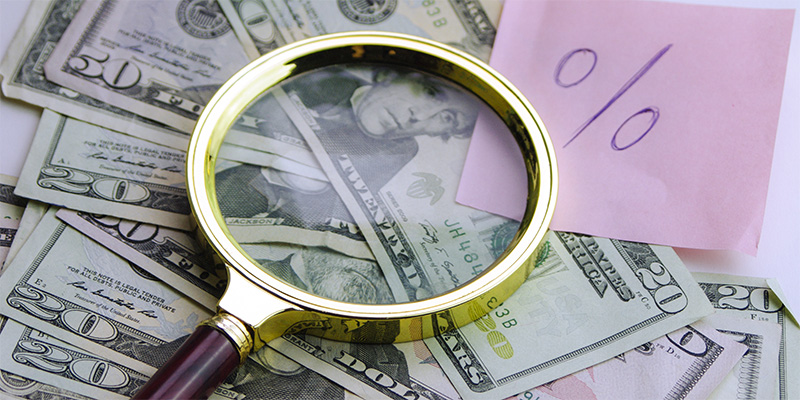
The Killer Instinct Separates Winners from Losers
I have had about 10–12 interns over the years, and I have taught a lot of college students, and occasionally I have smart interns or smart college students, but the one thing that absolutely cannot be taught is the killer instinct. You either have it or you don’t. You either have the insatiable desire to succeed or you don’t.

Property Taxes—Where Does Your State Rank?
If you own a home or you're thinking about buying one, I have some bad news.

Don’t Light Your Money on Fire
I know a lot of people who have gone broke because they told themselves, “I can afford the monthly payment.”

Use This Strategy to “De-Risk” Your Portfolio
When most people buy stocks, they find cheap ones and wonder why their trades don't work.

Your Top-Down Approach to Investing for Long-Term Success
The stock market is no place for amateurs.
In fact, I really wish it were hard to invest in stocks. Instead, it’s easy, it’s free, and we’ve got a lot of new “investors” pouring into the market.
I’ve said this before: You need to learn about investing before you put one penny in the stock market. So, today, we’re going to talk about something every investor has to wrestle with: position sizing.
If you really like a stock, do you make it 1% of your portfolio? 5%? 50%? There are no hard and fast rules. But here is my framework for making these decisions...
Four Factors to Consider
First, what is your conviction level? You get conviction by doing research. It doesn’t come from randomly picking stocks. And the more conviction you have, the bigger you can make the position.
Of course, a high level of conviction does not necessarily mean you’re right. My highest conviction trade ever was a bet that the Canadian housing market would blow up. I ended up doing pretty well, but it was not the greatest trade of all time.
I’ve also had some low-conviction trades that worked out surprisingly well.
The second thing to consider is liquidity. How easy will it be to sell at a reasonable price when you are ready? If you are buying a smaller stock with low liquidity, you should make the position smaller.
This isn’t much of an issue with large, heavily traded stocks like Apple (AAPL), General Electric (GE), or Bank of America (BAC). But when you trade very small stocks, it can be harder to sell than it was to buy. A lot of people found this out the hard way when the market crashed in March 2020.
The third factor is volatility. This is how quickly the price of an asset moves up and down, and by how much. The more volatile an asset is, the smaller you want your position to be.
Take bitcoin, for example, which is so volatile that I’d call it violent—the price of bitcoin can shoot up or down 10% or more in a very short period.
It is much too risky to have a large position in a highly volatile asset like that. It would dominate the returns of your portfolio, stress you out, and possibly lead you to sell at the worst possible time.
You can have much larger positions in low-volatility assets, like bonds. But even then, you need to be careful—low-volatility assets can still crash.
Finally, you want to consider asset allocation. How does this position fit into my overall portfolio?
Most people make the mistake of building a portfolio from the bottom up. They buy stocks A, B, and C, and asset allocation is an afterthought (if they ever think about it at all).
You will have much more success with a top-down approach, where you start with the asset allocation you want, and fill out the specific investments from there.
|
Have you ever googled “How to Invest for Retirement?” If you have, chances are you were left feeling overwhelmed—perhaps even paralyzed with information overload. Get the answers you need and start investing immediately with Jared Dillian’s Strategic Portfolio...where the goal is to get maximum profit with minimal risk. Click here for details on how to invest alongside Jared. |
Start with Sensible Allocation
This is exactly what I did with the Awesome Portfolio, which allocates:
-
20% to stocks
-
20% to bonds
-
20% to gold
-
20% to cash
-
20% to real estate
I chose these allocations because they tend to produce the highest returns over the long term but with the lowest level of risk and the lowest level of volatility.
Then I choose specific investments to fill out the portfolio—not the other way around.
That’s what next Wednesday, June 28 is all about: getting the next trade right. That’s when I will release a brand-new interview hosted by my good friend and colleague Ed D’Agostino.
It’s free, there is no registration, and you’re going to learn what to expect from this summer’s burgeoning new bull market—plus, I’ll tell you exactly how to position yourself for the opportunities setting up in the days ahead.
I’ll also take your questions… so, just click here to submit your questions, and there’s a very good chance I’ll answer them during our event!

Jared Dillian
|

This Number Dictates How Much You Can Save
The other night, my wife and I went out for dinner. When it came time to order dessert, I couldn’t help but think, “Is it really worth shelling out $13 for a piece of cake when we have other expenses, like building a big house?”
‹ First < 10 11 12 13 14 > Last ›